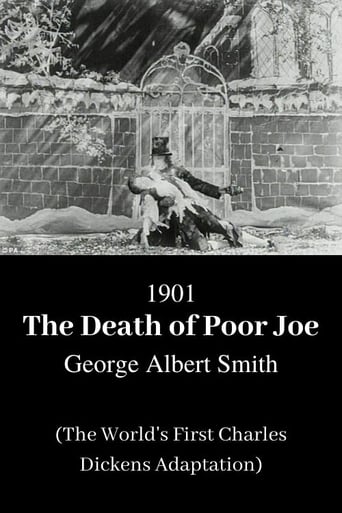Warwick Trading Company
The Coronation of Edward VII 1902
King Edward VII's coronation ceremony.
The Death of Poor Joe 1901
A scene from Charles Dickens' Bleak House.
State Entry into Delhi of Lord Curzon, the Viceroy 1903
Film showing the Viceregal party entering Delhi on lavishly decorated elephants, as part of the Coronation durbar of 1903.
The House That Jack Built 1900
A cleverly conceived picture of a little boy and girl with building blocks. The little girl has erected a pretty structure, which the boy proceeds to demolish with pokes of his fingers. When the demolition of the house is completed, the film is shown in reverse, and the little building comes back to its original form in a most marvellous manner.
General Buller Embarking on the 'Dunottar Castle' at Southampton 1899
Watched by crowds, Sir Redvers Buller, Lady Buller, the Mayor of Southampton and others walk along the gangway leading to the ship towards the camera. Sir Redvers pauses to be introduced to one of the ship's officers before embarking. According to BFI programme notes, the filmmaker William K.L. Dickson can be seen bottom left, attempting to introduce himself to General Buller as he passes. Film companies were in competition to film reportage of the Boer War and Dickson was one of those filmmakers keen to do so.
View from an Engine Front: Ilfracombe 1898
A “phantom ride” taken from the buffers of an engine on the London and South West Railway through the Ilfracombe area: the reservoirs, Morthroe, Ilfracombe Incline and station.
Lord Roberts Leaving For South Africa 1899
An actuality and reportage film. This film captures Lord Frederick Roberts (British Army rank Field Marshal) departing England for South Africa on 23rd December 1899, where he commanded British forces for a year in the Second Boer War. The ship in this film is the RMS Dunottar Castle. Going with Roberts is his chief of staff, Lord Kitchener, whose future role as Secretary Of State for War during World War One awaits him. This film was produced and distributed by the Warwick Trading Company, a London based company at its peak at this time, involved in the majority of British films.The Warwick Trading Company specialised in travel, reportage and actuality films and had substantial catalogues. Charles Urban had taken over as managing director in 1897 and was in that role when this film was produced. According to the BFI programme entry, the company had a large amount of resources already in South Africa. This meant they could capture historic moments as part of its Boer War coverage.
View from an Engine Front: Barnstaple 1898
A ‘phantom ride’ taken from the front of a train passing through the Devon town of Barnstaple.
Delhi Durbar 1902
Aristocracy, army, elephants and more mark the start of the 1903 Durbar.
Panorama of Calcutta 1899
One of the earliest films to be shot in India apparently shows the Calcutta ghats - or does it?
The 'Roslin Castle' (Troopship) Leaving for South Africa 1899
Spectators on the quayside at Southampton wave farewell as the crowded troopship Roslin Castle moves away to the right of the picture. Large numbers of troops on board wave back to loved ones and the crowd including thr 2nd Battaliion West Yorkshires. Date: 20th October 1899.
Fox Hunting 1906
An early short about fox hunting
The Latest News 1904
A man reads a newspaper whose moving letters form 'Bill Bailey has come home'.
Lancers Under the Earl of Airlie Fording the Modder River 1899
Footage from the Boer War.
Visit to Pompeii 1901
George Albert Smith and Charles Urban snaffled the plum job of travelling to Italy to take a series of views of Italy for the Warwick Trading Company, including this one. The long panning shots of Pompeii linger respectfully, as a tourist would, before the camera finally raises its eye to the mighty volcano looming in the distance beyond.
Churned Waters 1899
A view from the rear of a ship; A hypnotic study of the wake of a ship at sea.
Panorama of the Paris Exhibition No. 3 1900
An actuality film of the 1900 Paris Exhibition, shot from a boat travelling down the Seine.
The "Poly" Paper Chase 1900
The famous Polytechnic Harriers, one of Britain’s premier athletic clubs, who would later open the 1908 London Olympics, running a paper chase – a gruelling cross-country race in which the “hares” lay a paper trail for the “hounds”.
















